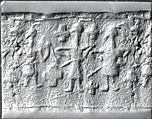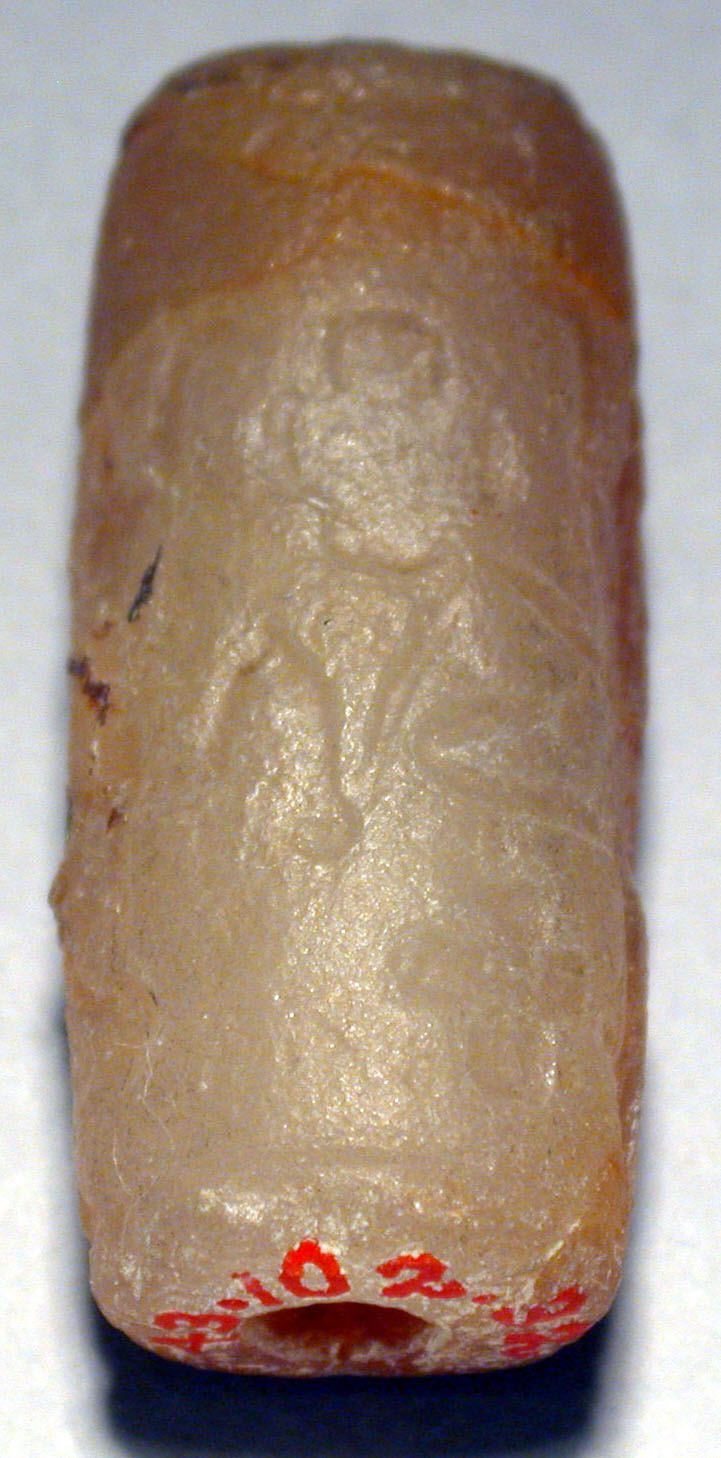Cylinder sea and modern impression: three figures
Not on view
Although engraved stones had been used as early as the seventh millennium B.C. to stamp impressions in clay, the invention in the fourth millennium B.C. of carved cylinders that could be rolled over clay allowed the development of more complex seal designs. These cylinder seals, first used in Mesopotamia, served as a mark of ownership or identification. Seals were either impressed on lumps of clay that were used to close jars, doors, and baskets, or they were rolled onto clay tablets that recorded information about commercial or legal transactions. The seals were often made of precious stones. Protective properties may have been ascribed to both the material itself and the carved designs. Seals are important to the study of ancient Near Eastern art because many examples survive from every period and can, therefore, help to define chronological phases. Often preserving imagery no longer extant in any other medium, they serve as a visual chronicle of style and iconography.
This cylinder seal is made of steatite. The modern impression of the seal is shown so that the entire design can be seen. The image features a procession of three stylized human figures with straight arms and legs, pointed heads, and possibly horns. They may be carrying weapons. Two crosses are in the background. The carving of the seal is shallow.
There are no good parallels for this seal, and consequently it is difficult to date. Similar crosses appear on Kassite seals from Mesopotamia, dating to the late second millennium B.C., and bird-headed men occur on seals, ivories and vessels from Hasanlu, dating to the 10th-9th centuries B.C. Thus the seal probably dates to the late second to early first millennium.
This seal was excavated at Surkh Dum, a settlement site in Luristan in the Zagros Mountains of western Iran. It was found in a structure interpreted as a sanctuary and was thus probably an offering to a god.
Due to rights restrictions, this image cannot be enlarged, viewed at full screen, or downloaded.
This artwork is meant to be viewed from right to left. Scroll left to view more.



